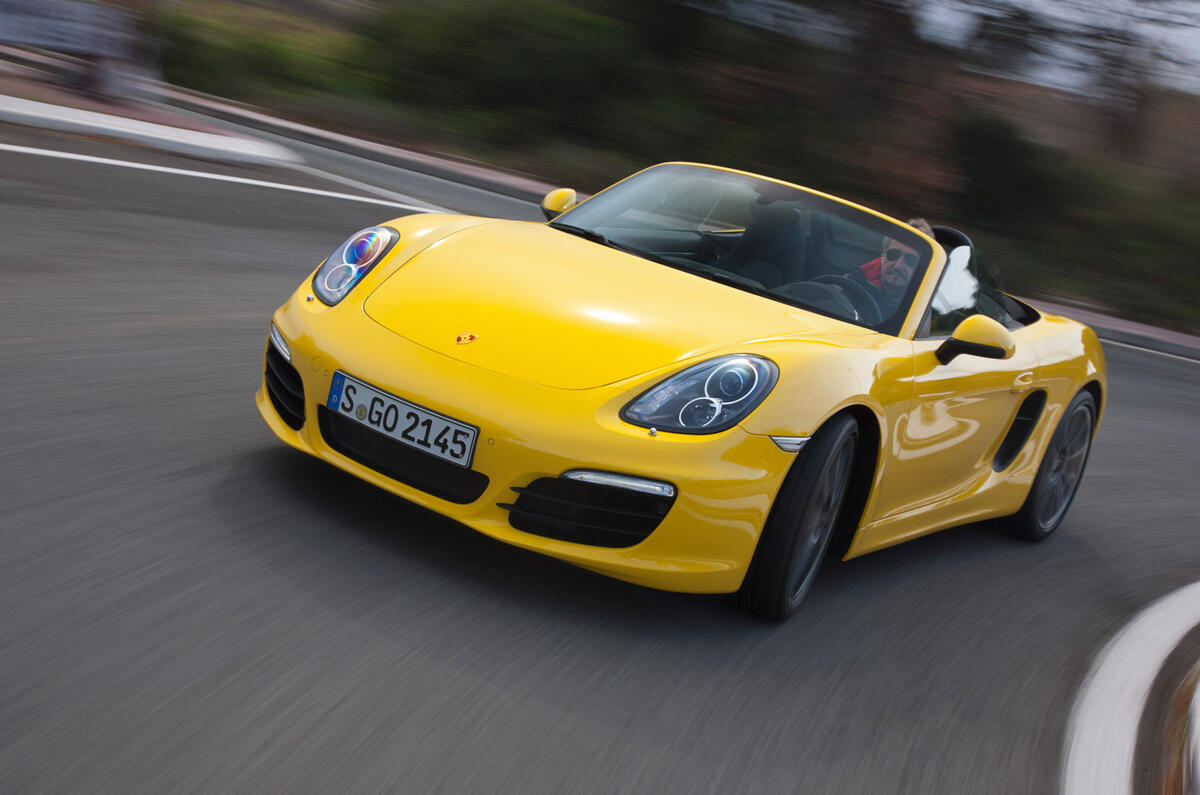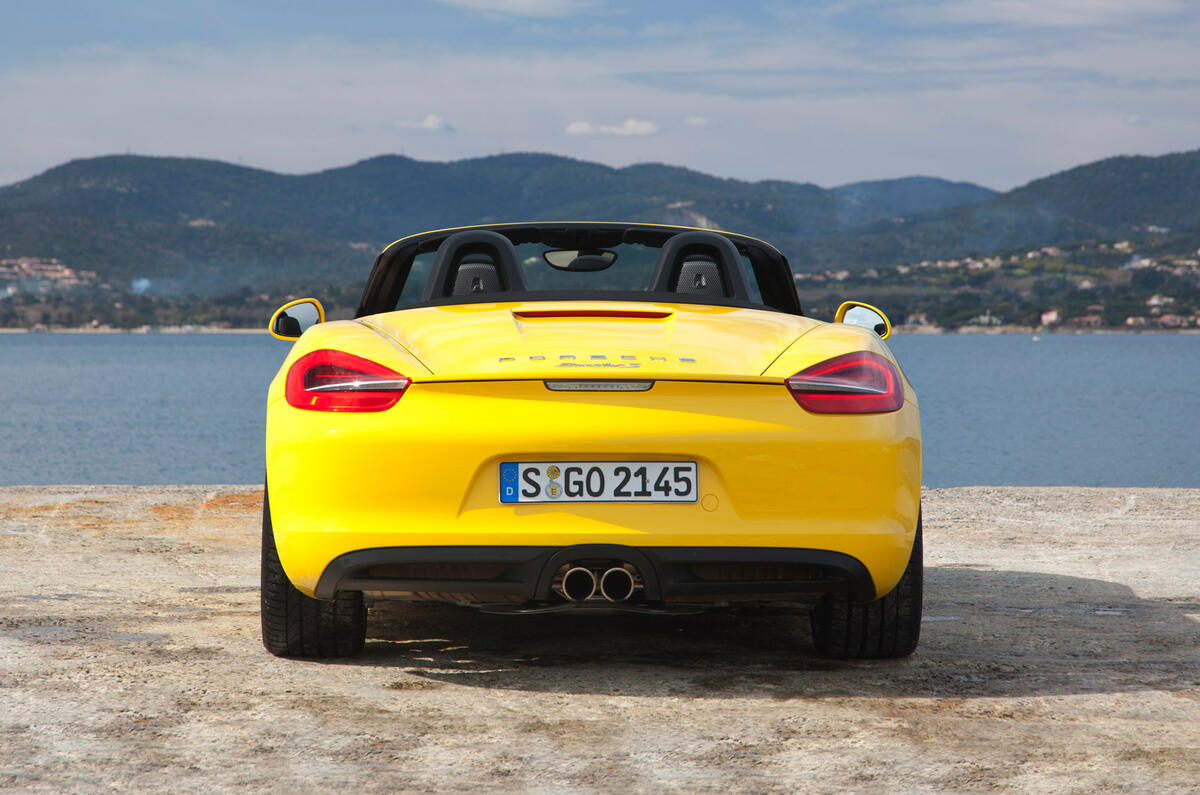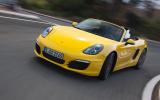What is it?
The new Porsche Boxster – codenamed 981 – represents a clear break from the past. A combination of new detailing, a more cab forward silhouette, larger wheel houses (to accept optional 20-inch wheels), distinctive air vents and a rear wing integrated into the tail lamps give the new Boxster a more striking appearance than ever. New underpinnings boasting wider tracks and longer wheelbase provides it with a more confidence stance.
Its mid-engined layout remains, but it retains its architectural links with the latest 911. Porsche wants models to have as much commonality as possible.
Underneath its new lightweight body, the thoroughly re-engineered roadster shares much of its front end structure with the 911, including its MacPherson strut front suspension and all-new electro-mechanical steering.
What’s it like?
Inside, the Boxster and 911 share much of their interiors. The new cabin looks and feels modern. The centre feature is the rising centre console. Housing an armada of switches, it also shortens the distance between the gear stick and steering wheel.
The wider, taller and more supportive seats are positioned lower than before and the added space is obvious. With a 60mm longer wheelbase, cabin length – and seat adjustment - has increased. Tracks widened by 36mm and 6mm front and rear have led to a slight increase in width.
Porsche still offers two naturally aspirated horizontally opposed six-cylinder engines. The 2.9-litre, multi-point fuel engine has been replaced by a 2.7-litre unit with direct injection. Power has increased by 10bhp to 261bhp at 6700rpm, 300rpm higher than before. Torque grows by 7lb ft to 206lb ft on a 400rpm wider band of revs between 4500rpm and 6500rpm.
The Boxster S driven here retains the same 3.4-litre unit, shared with the 911 Carrera. Revisions to the induction and exhaust liberate another 5bhp, taking power to 311bhp at 6700rpm. Torque remains at 265lb ft, but is available across a 200rpm wider range from 4500 to 5800rpm.
A six-speed manual is standard. Porsche expects the optional seven-speed dual-clutch gearbox to be more popular. It has a new electronic control unit for faster shifts and can operate in manual and automatic modes. The gear shift rocker switches still frustrate though. Get the optional shift paddles. You won’t be disappointed.
Both units receive stop-start, brake energy recuperation and a thermal management to acheive optimal operating temperature more quickly. A coasting feature reduces engine speeds on prolonged periods of trailing throttle. Porsche claims combined consumption figures of 36.6mpg and 35.3mpg for the Boxster and Boxster S respectively - 15.4 and 14.9 per cent better than the old model.
The classic flat six in the Boxster S is as responsive and memorable as ever, but feels more mature. There is added throttle response, considerable thrust and a stronger feel through the mid-range.
The new Boxster S has a power to weight ratio of 236bhp/tonne, or 230bhp/tonne with the optional dual clutch gearbox. That marks an improvement of around a third over the old car. Porsche claims a 0-62mph time of 4.8sec for the dual clutch-equipped model – a reduction of 0.2sec. An improved 0.30 drag co-efficient sees top speed increase to 172mph.









































Join the debate
Add your comment
Re: Porsche Boxster S
like the 991, electric steering and goofy electric handbrakes have no place on a sports car.
time to hunt out a nice 997...
Re: Porsche Boxster S
Re: Porsche Boxster S
Exige Scura is much better daily driver than a Caterham. And long distance cruiser. Only issue is lack of rear visibility but that's fixed with a reversing camera. I should add that my Caterham has no windscreen or weather gear. They are better with both but I'd still go for the Exige if I only had one car. Getting in and out is equally difficult I'd say. Driving to the Nurburgring and back via Spa in an Exige is no problem providing you don't go mad with the exhaust. Loud pipes can be unbearably droney. It's also much better on the motorway than the Elise I own which starts to struggle a bit after 120mph. Exige will hit an indicated 160mph pretty easily. With aircon and a sensible silencer it's borderline refined on the motorway.